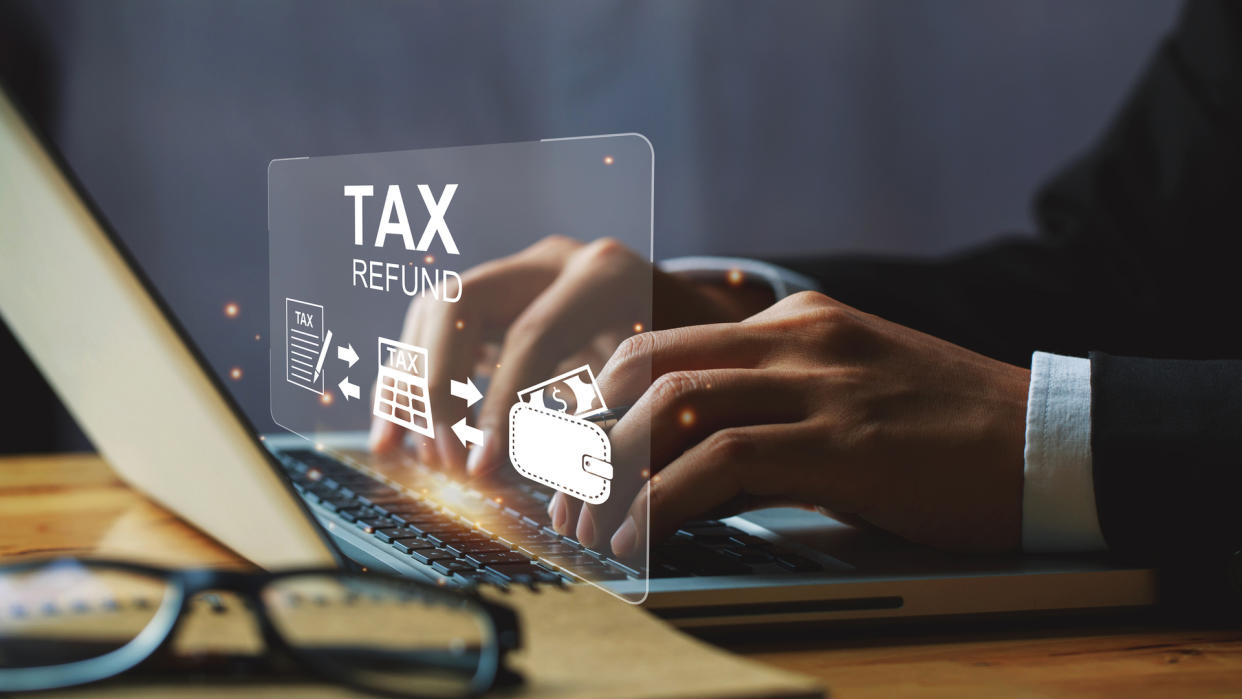I’m a Financial Expert — Your Tax Refund Should Be Used in These Two Ways First

CNBC recently reported that the IRS has received about 54 million tax returns so far and is issuing an average refund of $3,182 for the tax year 2023.
Check Out: A Look at Tax Filing Options and Costs
Read Next: 5 Genius Things All Wealthy People Do With Their Money
While it may feel like you’re receiving a windfall of cash with an average tax refund this large, the reality is that it was your money all along. It could be that your withholdings are too high throughout the year and you’re essentially giving the government an interest-free loan on your money. It might be worth adjusting your withholdings so that you can keep more of your money throughout the year.
However, if you did receive a tax refund this large, there are two things you should do with the cash.
Learn More: The 7 Worst Things You Can Do If You Owe the IRS
Two Of The Best Ways To Use Your Tax Refund
Save For Emergencies
If you get a large tax refund this year, the first thing you should do is start building or add to an existing emergency fund. LendingTree reported that as of 2023, almost half (or 49%) of US adults admit they wouldn’t be able to cover a $1,000 emergency using only cash or their banking accounts.
If you’re a part of this statistic and you don’t have an emergency fund, it’s best to start saving up at least 3-6 months’ worth of monthly expenses. If you already have one, depositing your tax refund into your account to beef up your emergency fund is always a good idea. Reaching a balance sufficient enough to cover at least 9 months’ worth of expenses is even better.
“I’d start with filling up your emergency fund with your tax refund, if that’s not yet filled,” explained Erika Kullberg — an attorney, personal finance expert, and founder of Erika.com — to CNBC. “If that is filled, then I would move to the second step, which is to take a look at the debt that you have to repay.”
Tackle Debt
Carrying debt burns a hole in your wallet and eats away at available cash that you could be investing or saving for your future. There are two smart ways to get rid of debt, according to Kullberg.
The debt snowball method involves making minimum payments on all your loans and then directing any extra cash to the debt with the smallest dollar amount.
However, she prefers the debt avalanche method. This involves paying down the debt with the highest interest rate first. This way, you reduce the highest interest owed first, allowing you to then redirect your money to pay down the next highest interest rate.
“For paying off debt, I like to use the debt avalanche method,” explained Kullberg. “When I graduated law school I had over $200,000 in debt. This is the method I used to get out of debt.”
More From GOBankingRates
This is One of the Best Ways to Boost Your Retirement Savings in 2024
6 Things You Should Never Do With Your Tax Refund (Do This Instead)
This article originally appeared on GOBankingRates.com: I’m a Financial Expert — Your Tax Refund Should Be Used in These Two Ways First
